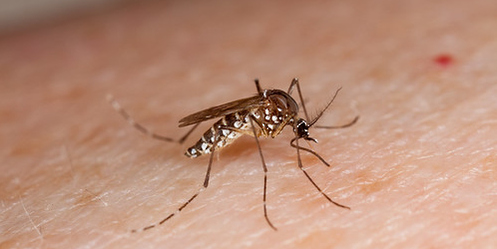
Ohio: The yellow fever mosquito became an invasive species, but researchers at the Ohio State University in the USA may have found a way to squash the pesky population in its juvenile stages.
Recently published in the journal Insects, a new paper describes how mosquitoes have evolved a natural resistance to some chemical insecticides, and offers an alternative called carbon black, a type of carbon-based nanoparticles, or CNPs.
Study co-author and an associate professor of entomology at Ohio State, Peter Piermarini described CNPs as “microscopic” materials made out of organic elements. The study used a modified version of carbon black called Emperor 1800. While CNPs are a relatively new scientific development, they have been considered as new tools to control various insect and pest infestations, he said.
The yellow fever mosquito, or Aedes aegypti, is a species of mosquito known for spreading not just yellow fever, but also diseases like the Zika virus, dengue fever and chikungunya fever. Adults rarely fly more than a few hundred meters from where they emerge, but their abundance leads to steady transmission of diseases – enough to claim tens of thousands of lives every year and hospitalize hundreds of thousands more people.
Because of this, the mosquito is considered to be one of the deadliest animals on the planet. For this study, the researchers’ goal was to figure out how toxic these nanomaterials could be to mosquito larvae, or the immature form of the insect.
When female mosquitoes are ready to lay their eggs, they return to standing pools of water, like lakes or birdbaths, to release them. After they hatch, these larvae will stay in the water for about a week until they reach adulthood, and take wing.
To test whether Emperor 1800 would be effective in stopping that process, researchers worked with two different strains of the yellow fever mosquito inside the lab, one extremely susceptible to typical chemical insecticides, and the other, extremely resistant to them.
By applying the carbon black nanomaterials to the water during the earliest stages of the mosquito’s life cycle and checking in 48 hours later, they were able to determine that CNPs kill mosquito larvae both quickly and efficiently.
“Our hypothesis is that these materials may be physically obstructing their ability to perform basic biological functions. It could be blocking their digestion, or might be interfering with their ability to breathe,” said Piermarini.
When first suspended in water, carbon black appeared equally toxic to larvae of insecticide-resistant and insecticide-susceptible mosquitoes, but the longer the carbon black was suspended in water before treating them. It became more toxic to the insecticide-resistant larvae.
The study concluded that these new nanomaterials could be extremely beneficial to controlling the species when applied as a preventive treatment to mosquito breeding grounds.
Before it can be utilized by the public, Piermarini said, carbon black needs to undergo rigorous testing to ensure it won’t harm humans and the environment as a whole.